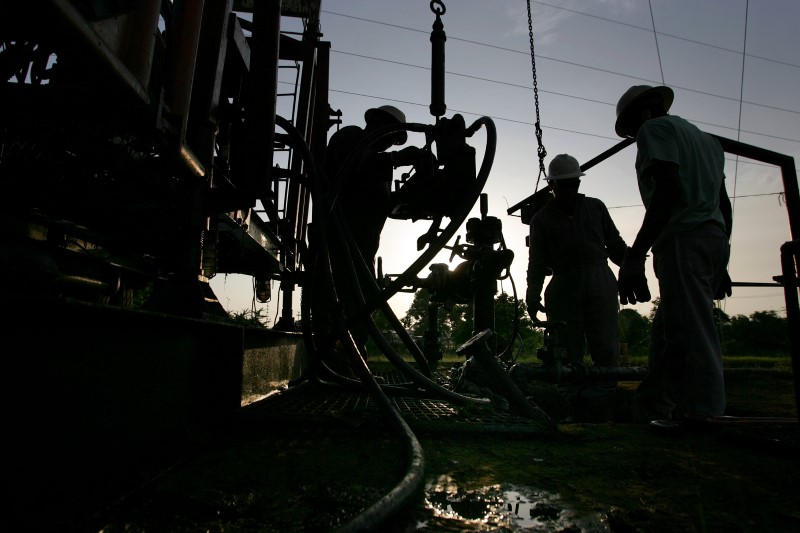(Repeats report originally published May 11, no changes to
headline or text)
By Catherine Ngai and Marianna Parraga
NEW YORK/HOUSTON May 11 (Reuters) - U.S. Midwest refiners
are rushing to secure alternatives for crude supply as they
worry about prolonged outages after a raging wildfire in Canada
shut nearly half of production capacity from the vast oil sands.
Even with some 1 million barrels per day in Canadian
production capacity still offline due to the massive wildfire,
sufficient U.S. supply is no problem, traders said. They pointed
to record crude stocks at the U.S. hub of Cushing, Oklahoma,
swelling domestic supplies as well as growing imports from Latin
America, West Africa and the Middle East.
Still, they said, refiners with a large appetite for
Canadian crude may have trouble getting alternative supplies
fast enough. Those facilities may include BP PLC's BP.L
Whiting, Indiana refinery and Phillips 66's PSX.N Wood River,
Illinois, refinery.
For now, they will pull crude from their own storage tanks
or get it from Cushing or the Gulf, reversing trade flows that
have prevailed during the U.S. shale boom, traders and analysts
said.
But some refiners without accessible crude supply and with
tighter margins may have to cut refinery runs, analysts said.
This could exacerbate the swollen U.S. crude glut and add more
pressure to oil prices.
While U.S. refinery margins saw a big spike on Wednesday,
they are below their five-year average for this time of year,
Reuters Eikon data showed.
And refiners in the eastern part of the U.S. Midwest, still
reeling from the unplanned Keystone pipeline outage last month,
will be left without Canadian supply, said Dominic Haywood, an
analyst at Energy Aspects in London.
"They will likely rely on inventory in the first instance,
but for some plants this will not be sufficient to sustain runs
if inflows from Canada remain subdued," he said, adding that the
long transit time from other market hubs and softer margins
could mean "unavoidable" run cuts.
The rush to supply crude to the Midwest was apparent this
week on news that volumes will more than double in May on the
largest U.S. pipeline, the 1.2 million bpd day Capline running
from the U.S. Gulf to the Midwest. Yet even that
increase still represents only half its nameplate capacity.
Traders noted that other pipelines providing crude to the
Midwest, including Enbridge's Ozark and BP1 pipelines, still
have additional capacity.
Analysts predicted that the logistical lag time will result
in some backlogs for refiners already starved from their typical
Canadian diet for more than a week.
This includes Husky's Lima refinery, which was wrapping up a
major eight-week turnaround at the end of April as it tries to
process more heavy crude feedstock.
U.S. imports of Canadian crude rose to 2.95 million barrels
per day through last Friday. Production cuts due to the fire
should put a big dent in that this week.
Traders said other imports, though plentiful, will need time
to move to the Midwest. U.S. imports of West African crude are
expected to rise in May to the highest since October 2013.
Iraqi imports should hit the most since at least
the start of 2015, according to Eikon data.
Latin American crude, which would be a natural replacement
for Canadian oil due to quality, has also had some setbacks as
several outages have forced countries including Brazil and
Venezuela to reduce exports. U.S. imports of Latin American
crude are expected to grow 3.3 percent in May from April.
Despite the regional constraints, the futures and cash
markets have largely shrugged off the fire. In the cash market,
Light Louisiana Sweet and Mars Sour, the U.S. Gulf Coast light
and sour benchmarks, respectively, moved little this week as a
glut in the U.S. Gulf Coast grows, where some spots show delays
of up to two weeks in offloading crude.
Oil production shut in from Alberta wildfire
GRAPHIC-Canada wildfire shuts crude capacity http://tmsnrt.rs/1T6HcrN
^^^^^^^^^^^^^^^^^^^^^^^^^^^^^^^^^^^^^^^^^^^^^^^^^^^^^^^^^^^>
